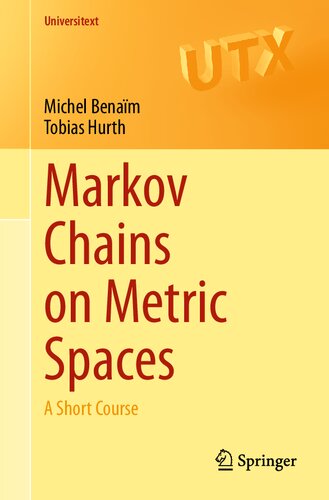

Most ebook files are in PDF format, so you can easily read them using various software such as Foxit Reader or directly on the Google Chrome browser.
Some ebook files are released by publishers in other formats such as .awz, .mobi, .epub, .fb2, etc. You may need to install specific software to read these formats on mobile/PC, such as Calibre.
Please read the tutorial at this link: https://ebookbell.com/faq
We offer FREE conversion to the popular formats you request; however, this may take some time. Therefore, right after payment, please email us, and we will try to provide the service as quickly as possible.
For some exceptional file formats or broken links (if any), please refrain from opening any disputes. Instead, email us first, and we will try to assist within a maximum of 6 hours.
EbookBell Team

0.0
0 reviewsMathematics Subject Classification: • 60J05 Discrete-time Markov processes on general state spaces • 37-01 Introductory exposition (textbooks, tutorial papers, etc.) pertaining to dynamical systems and ergodic theory • 37H15 Random dynamical systems aspects of multiplicative ergodic theory, Lyapunov exponents • 37B20 Notions of recurrence and recurrent behavior in topological dynamical systems • 60K15 Markov renewal processes, semi-Markov processes
This book gives an introduction to discrete-time Markov chains which evolve on a separable metric space.
The focus is on the ergodic properties of such chains, i.e., on their long-term statistical behaviour. Among the main topics are existence and uniqueness of invariant probability measures, irreducibility, recurrence, regularizing properties for Markov kernels, and convergence to equilibrium. These concepts are investigated with tools such as Lyapunov functions, petite and small sets, Doeblin and accessible points, coupling, as well as key notions from classical ergodic theory. The theory is illustrated through several recurring classes of examples, e.g., random contractions, randomly switched vector fields, and stochastic differential equations, the latter providing a bridge to continuous-time Markov processes.
The book can serve as the core for a semester- or year-long graduate course in probability theory with an emphasis on Markov chains or random dynamics. Some of the material is also well suited for an ergodic theory course. Readers should have taken an introductory course on probability theory, based on measure theory. While there is a chapter devoted to chains on a countable state space, a certain familiarity with Markov chains on a finite state space is also recommended.